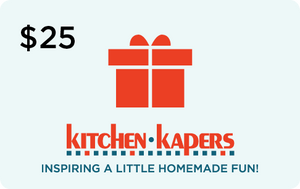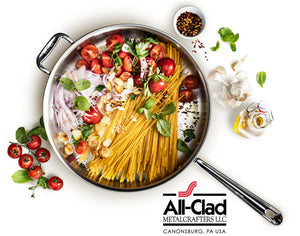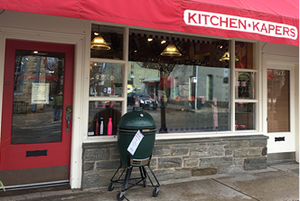Common Cookware Materials:
- Stainless Steel
- Copper
- Aluminum
- Carbon Steel
- Cast Iron
- Clay and Stoneware
-
Non-stick Surfaces
- PTFE Cookware
- Ceramic
Stainless steel is made by adding chromium and nickel to steel, making it highly anti-corrosive. The most preferred type will be stamped "18/10" (the ratio of chromium to nickel added) though other types of stainless steel are also used with very good results. This material can be found in many of the best pots and pans because it is durable and attractive. Stainless steel (particularly "18/10") is also prized as an interior cooking surface because it does not react with acidic or alkaline foods and won't pit or scratch easily. This quality is an important one, as it promises a certain purity to whatever gets cooked in it; it will not discolor foods or impart metallic flavors no matter what they are. Additionally, stainless steel is dishwasher, oven and broiler safe.
Unfortunately, stainless steel is a poor conductor of heat and by itself would make a miserable pan! Thankfully a process was developed for permanently bonding layers of stainless steel to highly conductive metals, namely copper and aluminum. The resulting stainless steel "clad" pots and pans are considered by many to be the most versatile and practical cookware available. It marries the impervious nature of stainless with the conductive qualities of other metals to create an attractive, do-anything-well pan. That makes stainless steel clad cookware a good choice for the most used pans in your collection, and its durability with low maintenance is easily worth the cost.
Another method for improving stainless steel in cookware is by "impact-bonding" a heavy gauge aluminum disk to the bottom of a thin gauge vessel of straight stainless steel. This type of construction is not as durable or as evenly conductive as clad cookware, but well made examples are still very good performers and can last a long time with moderate use. And to its credit, impact bonded stainless steel carries a much lower cost than "clad" cookware and still possesses all the benefits of a nonreactive interior and ease of maintenance. For larger auxiliary pieces that only see occasional use such as 12 qt.+ stockpots and rondeaus, impact bonded cookware is the norm.
Open-Stock Stainless Steel Cookware »
Stainless Steel Cookware Sets »
Copper
Copper is the best heat conductor of any material used to make cookware. It heats rapidly and evenly and cools down as soon as it's removed from the heat, giving you maximum control over the application of heat. How quickly a pan responds to a change in cooking temperature is referred to as "responsiveness" and can be a significant factor in choosing what pan will deliver the best results for different jobs. Since copper is the most highly responsive type of cookware, it is highly prized by professional chefs the world over. The best-quality copper pans are made of a heavy gauge, 1/16 to 1/8 inch thick.
However, copper cannot be used alone for most cookware applications because it "reacts" with the natural minerals and acids of many foods. That means it can add a yellow tint and metallic taste to many foods. For that reason most copper cookware must be lined with a nonreactive metal such as tin or stainless steel to create a safe barrier between the copper and its contents. Traditionally, tin is the material used to line copper cookware because it is responsive and nonreactive. But tin will eventually wear through and will need to be re-applied (re-tinned) by a craftsman. A stainless-steel clad lining will last a lifetime, but some cooks feel that an interior layer of steel compromises copper's responsiveness. Using a thick gauge copper will minimize this effect, but certainly increases cost as well.
Which brings us to copper's only real downside- the cost. Copper is a precious metal so yes, you can expect a pot made out of the stuff to be expensive. But if you want to saute or produce a fine sauce with a high degree of precision and control or if you are an avid cook and a perfectionist, there is no better pan. Copper yields uniformly browned meats, crisp textures and caramelized fonds; they are a real treat to use. Additionally copper cookware will add beauty to your kitchen and maintains its value well.
Some specialized copper pans, designed for cooking foods with a high sugar content such as zabaglione and jam, are unlined because the sugar prevents a reaction with the metal. It is also notable that unlined copper bowls are traditionally used for the specific task of whipping egg whites. As it turns out, a safe chemical interaction occurs between copper and egg whites that stabilizes whipped egg whites against over beating or "unfolding".
Copper is not magnetic and therefore cannot be used on induction ranges. Very heavy professional or restaurant pans will have iron handles, while those for home use will be made of brass or stainless steel. All are perfectly safe for oven use. Copper cookware should never be placed in the dishwasher. Instead, handwash your pieces and occasionally apply copper polish to maintain its bright lustre. If you prefer to not polish your copper, over time it will loose its shine and develop a darker patina. Polished or not, the cookware performs the same.
Pure aluminum is second only to copper in heat conductivity. It is inexpensive, and when strengthened (usually by adding magnesium, copper or other metals) it makes wonderfully light and responsive cookware on its own. But as you may have guessed, natural aluminum will react with certain acidic foods, imparting a metallic taste and dull gray tint. To address this shortcoming, the best pieces are either lined with a nonstick coating, clad with stainless steel, or undergo anodization (a process that significantly hardens the surface and gives it a very dark grey color). In fact, more and more manufacturers are anodizing pieces that will also have nonstick or stainless interiors because it is attractive, more durable and easier to clean.
In the end, there are many examples of high-performing, nonreactive aluminum cookware to choose from. We believe it makes the finest nonstick lines available. Plus, it remains the most popular core material for stainless steel clad cookware. Most aluminum pots cannot be used on an induction stovetop unless they have a steel exterior, and specific dishwasher and oven use will vary from type to type. Be sure to look into the specific care requirements for each brand.
Because aluminum is lightweight, it makes a practical choice for larger pieces like roasting pans, griddles, rondeau pots and large water pots, particularly when anodized or nonstick coated.
Open Stock Aluminum Cookware »
Carbon steel follows aluminum in heat conductivity. Although inexpensive and very durable, raw carbon steel is relegated to specialty pan use, mainly as a skillet or wok. One reason for this is carbon steel will rust if not seasoned (oiled) properly. The good news is that if it is seasoned properly it will develop a naturally nonstick interior (very much like cast iron), and experienced cooks will find them to be highly versatile. The pans are somewhat heavy and a little slow to heat, they can react a bit with very acidic foods and maybe are not the best all-rounders. But they can achieve a higher temperature than other pans and hold the heat well, which makes them ideal for certain high heat techniques. Carbon steel is our first choice for crusty Pommes Anna, searing steaks, blackening fish, and stir fry. If you'd like to learn more about how carbon steel can work for you, have a look at our Carbon Steel Page.
But in most kitchens, carbon steel is more widely used as the core metal for enameled cookware, including tea kettles, roasting pans, lobster pots and broiling pans. Carbon steel is also the traditional metal for paella pans, although enamel versions are more popular now. This enameled cookware is an economical, practical and nonreactive solution for larger pieces of cookware, but beware thinner examples that will frequently have hot spots.
Carbon steel is oven and broiler safe and will work with any heat source, but enameled pieces are not always recommended for glass stovetops. Please refer to specific manufacturer recommendations.
Open Stock Carbon Steel Cookware »
Cast Iron is a poor conductor of heat; which means it's slow to heat up and slow to cool down. But this self-regulating nature makes cast iron a preferred material for dutch ovens, fry pans, griddles and grill pans. These pieces are exceedingly durable and resist warping, denting and chipping. Cast iron cookware is available in its natural state or enamel coated and both cook similarly but there are other notable differences. Natural cast iron costs substantially less, but it requires the user to apply a "seasoning" coat to protect it from rust. Aside from preventing rust, seasoning creates a wonderfully nonstick interior, and it has rustic/iconic good looks. (If you have more questions about what "seasoning" is, or how it is applied, check out How to Season Cast Iron Cookware).
Recently, "craft" cast iron forges have sprung up throughout the US, and their incredibly beautiful and highly refined pieces are creating new excitement in the cookware market. Most producers also offer pieces that have a "factory-applied" seasoning layer that will protect them from rust- but they must still be maintained correctly.
Enameled Cast Iron pieces are maintenance free- easy to clean, completely nonreactive and boast beautifully colored glazes... benefits that are, of course, reflected in the higher cost. Both types are worthy of passing on to your kids.
All cast iron is really heavy, and it's important that you are comfortable with the weight of this cookware. A standard 10" fry pan weighs close to 6 lbs. and dutch ovens with lids can easily double that.
Open Stock Cast Iron Cookware »
Clay and Stoneware
Clay and stoneware vessels are the oldest type of cookware, but don't think that makes them obsolete! These pieces are practical, durable and produce outstanding cooking results. Besides, when it comes to good cooking, "Old Fashioned" still carries a very positive connotation.
The majority of stone cookware available on the American market are glazed baking dishes and casseroles (with or without lids) that are intended for oven use only. They vary in shape and size, come in an assortment of colors that look great on the table, plus they are dishwasher and freezer safe! What's not to like? Clay and stoneware heats very evenly and holds heat well like cast iron, but is is far less likely to burn anything. They are most often used for any type of casserole, lasagna, macaroni and cheese, and other baked pastas, enchiladas, scalloped potatoes, various gratins or as roasting pans. Of course they are also ideal for baked goods such as brownies, bread puddings and custards like crème brûlée, depending on their size and shape.
Other, more specialized types of stoneware that have found a place in the American kitchen include pizza stones, bread pans and bread cloches, and tagine pots. "Romertopf" covered pots are made from porous, unglazed clay and they produce amazingly juicy and flavorful roasts, as well as crusty breads. And before you go on thinking that nothing new ever happens in the stoneware category, some manufacturers now make stoneware pots and pans that can be used on gas and electric stovetops! They behave much like cast iron and can even be seasoned to create a nonstick surface but they are 30% lighter and nonreactive.
Stoneware does, however, require a few special considerations to maintain it and prevent cracks. Because its temperature rises quite high during cooking, never place it directly on a cold surface or fill it with anything cold while it is still hot. Because of the great diversity in this category of cookware it is important to follow the specific care and use instructions for the pieces you use.
It is also important to note that some inexpensive brand stoneware can contain lead, depending on the type of materials and manufacturing that is used. This is no longer common, but be sure to check labels for assurance that the stoneware is lead-free. Modern stoneware that is lead free is generally considered to be the safest, most benign cooking surface you can use.
Open Stock Ceramic & Stoneware Cookware »
Nonstick Surfaces
Nonstick surfaces are not only popular because of their ease during clean-up but also because they lend themselves to healthy cooking. Most non-sticks allow the cook to use minimal amounts of oil or or even advertise that you can use none at all (though, to maintain the performance and lifespan of quality nonstick surfaces, we don't recommend that). It's best to take special care with nonstick surfaces because they only really work well when they are intact, any once they are scratched or scuffed, things can go quickly downhill. Don't use metal utensils on nonstick surfaces, instead use heat-safe materials such as hard nylon, silicone or wood. And regardless of the type of nonstick you use, take care not to use excessive heat. Clean your cookware with a natural sponge or soft plastic brush. Avoid stacking nonstick pans, as the metal bottoms can scratch the pan beneath. If you need to stack the pans due to lack of storage space, put a paper towel or other soft cloth liner between them. The most important take-away is that nonstick cookware requires special treatment if you want it to last. For more information, read our Nonstick Cookware Care page.
All nonstick cookware currently widely available falls into one of two categories, PTFE or ceramic.
Open Stock Nonstick Cookware »
- PTFE Cookware
- PTFE is the “classic” nonstick material made famous by the brand Teflon. While it is extremely functional, some are concerned about its safety because when overheated, PTFE coatings can break down and release gases. So when baking, roasting or especially broiling with PTFE cookware, make sure to stay within the manufacturers recommended maximum oven safe temperature. For stovetop cooking, simply avoid overheating the pan before food goes in it. Once oils, foods and liquids are added, overheating is far less of a concern but you should still not allow the pan to stay over the high setting for a prolonged period of time.
- Ceramic cookware
- Ceramic is a newer surface material in the world of nonstick cookware. It’s widely considered to be a safer, and more environmentally friendly option but some argue that it is not as long-lasting as PTFE surfaces. Again, it is recommended to avoid the use of high heat when using ceramic cookware, as this will affect its nonstick properties. If you cook with oil, it’s important to completely clean off all of the cooked oil after each use. Otherwise layers of oil will build up, diminishing the nonstick properties of the cookware.



